| View previous topic :: View next topic |
| Author |
Message |
stevemark

Joined: 29 Apr 2011
Posts: 3754
Location: Switzerland
|
 Posted: Mon Jul 13, 2020 7:28 pm Post subject: Soft Focus: Thambar, Mamiya, Minolta, and Tamron zoom Posted: Mon Jul 13, 2020 7:28 pm Post subject: Soft Focus: Thambar, Mamiya, Minolta, and Tamron zoom |
 |
|
stevemark wrote:
Inspired by another thread about superfast and soft projector lenses I looked at a few "real" soft focus lenses. To me, these are some of the most interesting soft focus lenses:
1) Leica Thambar 2.2/9cm (1936; first real soft focus lens for the emerging 35mm cameras)
2) Mamiya-Sekor SF C 4/145mm (around 1980?: most sophisticated soft focus lens I know - period)
3) Minolta MD 2.8/85mm Soft Focus (1978, first soft focus prime lens for 35mm SLRs with variable soft effect)
4) Tamron SP 2.8/75-150mm (around 1980? First and only soft focus zoom lens)
Let's start with the legendary Leitz Thambar 2.2/9cm. Wide open, Central filter used.

Soft Effect: Beautiful and well balanced
Bokeh: Distracting and a bit weird (this is NOT an effect of the central filter; bokeh is nearly identical without it)
Now the Mamiya Sekor SF C 145mm 1:4, first at f4 and with maximal Soft effect (level 5):

Soft effect: Very strong
Bokeh: perfectly smooth
Now the same Mamiya Sekor SF C 145mm 1:4 at f5.6 and lowest Soft effect (level 1):
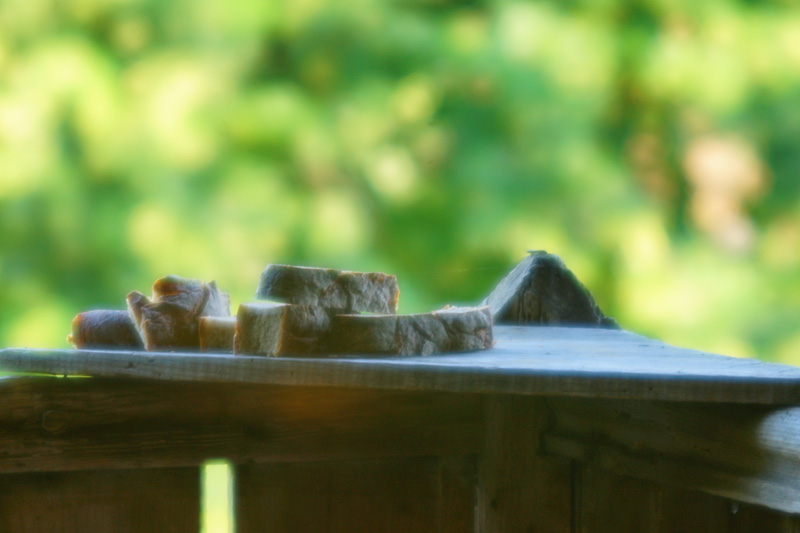
Soft effect: medium, and well balanced (less harsh than the Minolta MD 2.8/85mm Soft Focus at f2.8 and level 1)
Bokeh: perfectly smooth, very similar to the legendary Minolta/Sony 2.8/135mm STF (Smooth Trans Focus) Bokeh monster
Now the Minolta MD 2.8/85mm Soft Focus - first wide open (f2. and maximal soft effect (level 3): and maximal soft effect (level 3):

Soft effect: strong but well balanced
Bokeh: Typical "Tiefenzeicher" bokeh (smooth, but not completely blurred background!)
Minolta MD 2.8/85mm Soft Focus - still wide open (f2.8 ) but minimal soft effect (level 1):
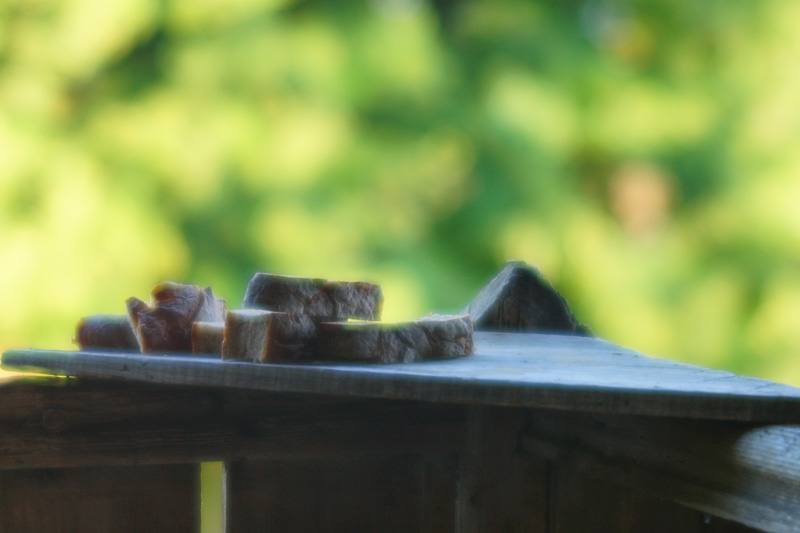
Soft effect: medium, and a slightly harsh (especially in back light situations)
Bokeh: extremely smooth (like Minolta 2.8/135mm STF)
Now the only Soft Focus zoom lens, the Tamron SP 2.8/70-150mm, first at f2.8, 150mm focal length and max. soft level (level 3):
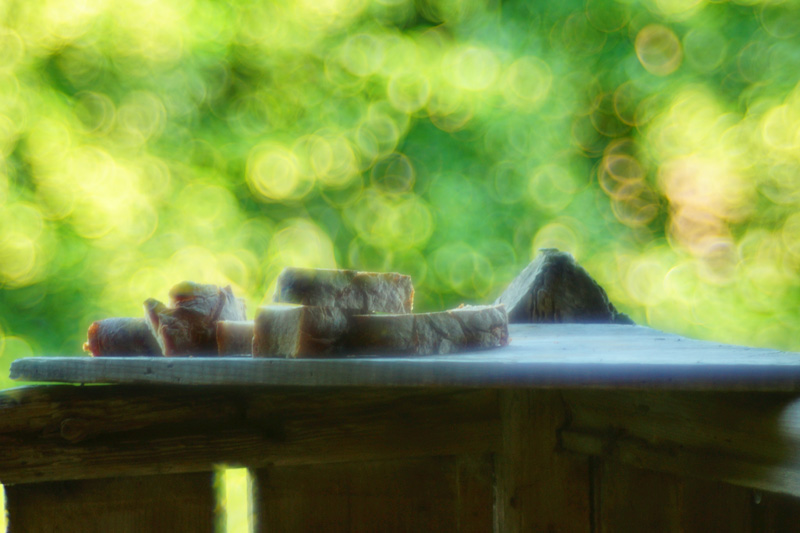
Soft effect: medium, and a bit harsh (not as uniformly as with the Mamiya and the Minolta)
Bokeh: Weird
Tamron SP 2.8/70-150mm, still at f2.8, 150mm focal length but at the minimal soft level (level 1):

Soft effect: weak
Bokeh: average / "normal"
Finally the Tamron SP 2.8/70-150mm at f2.8, 70mm focal length and max. soft level (level 3):
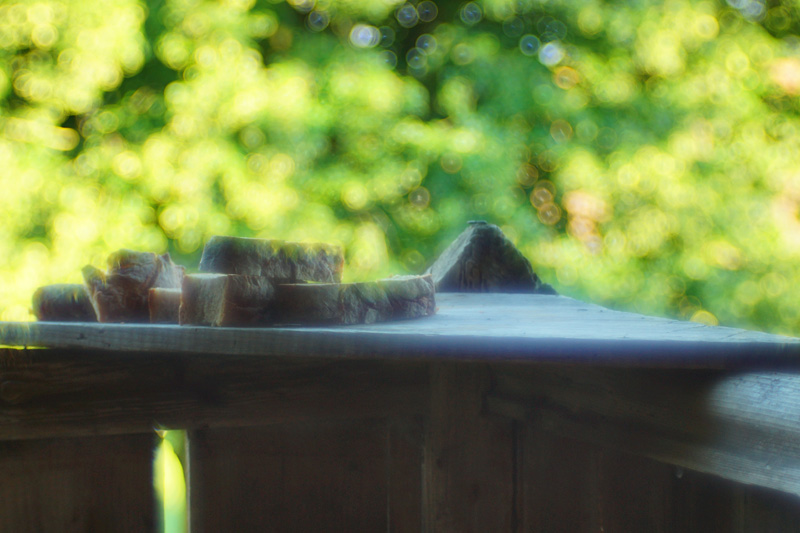
Soft effect: medium
Bokeh: slightly weird (circles with a central dot!!)
_________________
www.artaphot.ch |
|
| Back to top |
|
 |
pdccameras


Joined: 23 Aug 2009
Posts: 826
Location: Putnam, CT
Expire: 2014-08-11
|
 Posted: Mon Jul 13, 2020 8:11 pm Post subject: Posted: Mon Jul 13, 2020 8:11 pm Post subject: |
 |
|
pdccameras wrote:
Nice images! While these lenses share the soft focus name, they all certainly have their own individual look. Not only can some of these lenses be considerably complex in design, as you mention, but also in operation. Focussing with the Pentax 67 120mm Soft lens, for example, is a bit awkward to say the least:
(condensed from article by Kimio Tanaka in Pentax Family #51)
"The degree of softness is controlled by the aperture stops - the smaller the aperture the sharper is the picture image. In other words, the lens has two aspects - one is the soft effect over an aperture range of f/3.5-5.6 and the other sharp depiction over a range of f/11-22."
"The soft focus effect is almost nil around f/8 and depiction becomes as sharp as regular lenses over the aperture range f/11-22. The focus tends to be a little behind the in-focus point. In other words, the actual point of focus on the film plane is a bit behind the best focus point even if you focus on the focusing screen of the camera. Its principle is a little complicated but, in short, the human eye is dazzled by the flare of the soft-focus lens. Critical focusing is an unexpectedly indispensable factor in the use of a soft-focus lens. If it is not fully focused, a flare-combined picture is not attractive".
Tanaka then goes on to describe three ways to achieve best focus: "The easiest way is the use of correction lines engraved on the lens barrel. As the focus point differs with the aperture stops, stop down the aperture to the desired stop for taking pictures. Be sure to use a matte portion of the focusing screen. Then, turn the focusing ring to the correction line indicator. (The diagram here shows two white correction lines, the left one labelled "resolution weighted", the right one, nearest the orange standard line, labelled "contrast weighted".) The other way is to stop down the aperture to f/11 (the finder field will be a bit dark) and then return to the working aperture which should be within a range of f/3.5 to f/5.6."
It certainly takes some getting used to.
Best,
Paul
_________________
Canon 5D Mii, Canon 40D, Canon 350D IR, Sony A7 Mii, Sony Alpha-6000, a ton of lenses: AF & MF and too many cameras to count, all formats: 110 - 4x5. |
|
| Back to top |
|
 |
Pancolart


Joined: 04 Feb 2008
Posts: 3693
Location: Slovenia, EU
Expire: 2013-11-18
|
 Posted: Thu Jul 16, 2020 9:07 am Post subject: Posted: Thu Jul 16, 2020 9:07 am Post subject: |
 |
|
Pancolart wrote:
Sigma YS System Focusing Macro 2.8/100mm (4/200). Just replace System Focusing with Soft-Focus Vario. Results are very comparable to above.
http://forum.mflenses.com/sigma-ys-system-focusing-lenses-t38337.html
_________________
---------------------------------
The Peculiar Apparatus Of Victorian Steampunk Photography: 100+ Genuine Steampunk Camera Designs https://www.amazon.com/dp/B0B92829NS |
|
| Back to top |
|
 |
stevemark

Joined: 29 Apr 2011
Posts: 3754
Location: Switzerland
|
 Posted: Thu Jul 16, 2020 2:17 pm Post subject: Posted: Thu Jul 16, 2020 2:17 pm Post subject: |
 |
|
stevemark wrote:
I have one of those crazy lenses, too, probably the 200mm or the 135mm. I should check the Sigma box up in the attic ...
S
_________________
www.artaphot.ch |
|
| Back to top |
|
 |
Blazer0ne

Joined: 12 Sep 2018
Posts: 836
Expire: 2024-12-07
|
 Posted: Thu Jul 16, 2020 2:45 pm Post subject: Posted: Thu Jul 16, 2020 2:45 pm Post subject: |
 |
|
Blazer0ne wrote:
...
Last edited by Blazer0ne on Tue Feb 22, 2022 6:49 pm; edited 1 time in total |
|
| Back to top |
|
 |
stevemark

Joined: 29 Apr 2011
Posts: 3754
Location: Switzerland
|
 Posted: Thu Jul 16, 2020 3:39 pm Post subject: Posted: Thu Jul 16, 2020 3:39 pm Post subject: |
 |
|
stevemark wrote:
| Blazer0ne wrote: |
| By way of Charley5. Ethereal photos. These lens need a human subject. ... I think they need maximum creativity or their character is defeated. Thanks for sharing your collection. |
Absolutely !! But sometimes i simply get curious about something and make a quick test just for myself ... only to realize that the outcome might be useful for others as well. I simply don't have the time to find a model, the arrange with a her, and finally do the testing ...
I have shared some useful information about the "technical" side (softness, bokeh) of these lenses - now you (or someone else ...) might contribute some artistic images 
S
_________________
www.artaphot.ch |
|
| Back to top |
|
 |
kypfer

Joined: 27 Sep 2017
Posts: 516
Location: Jersey C.I.
|
 Posted: Fri Jul 17, 2020 4:08 pm Post subject: Posted: Fri Jul 17, 2020 4:08 pm Post subject: |
 |
|
kypfer wrote:
I'd have been interested to see how the EBC Fujinon SF 85mm f/4 compared in this test. I've had a screw-mount one since the '80's, only rarely used it, but love the results when I do.
Too many lenses ... too little time  |
|
| Back to top |
|
 |
stevemark

Joined: 29 Apr 2011
Posts: 3754
Location: Switzerland
|
 Posted: Fri Jul 17, 2020 4:46 pm Post subject: Posted: Fri Jul 17, 2020 4:46 pm Post subject: |
 |
|
stevemark wrote:
| kypfer wrote: |
| I'd have been interested to see how the EBC Fujinon SF 85mm f/4 compared in this test. I've had a screw-mount one since the '80's, only rarely used it, but love the results when I do. |
You have the lens, and you expect me to show its properties to you?
Come on ... !!
S
_________________
www.artaphot.ch |
|
| Back to top |
|
 |
visualopsins


Joined: 05 Mar 2009
Posts: 10541
Location: California
Expire: 2025-04-11
|
 Posted: Fri Jul 17, 2020 5:18 pm Post subject: Posted: Fri Jul 17, 2020 5:18 pm Post subject: |
 |
|
visualopsins wrote:
| stevemark wrote: |
| kypfer wrote: |
| I'd have been interested to see how the EBC Fujinon SF 85mm f/4 compared in this test. I've had a screw-mount one since the '80's, only rarely used it, but love the results when I do. |
You have the lens, and you expect me to show its properties to you?
Come on ... !!
S |
In comparison with the other lenses same test, yes.  He might not have the other lenses in your test. Do you have a copy of his lens? If yes, then maybe you would reconsider? He might not have the other lenses in your test. Do you have a copy of his lens? If yes, then maybe you would reconsider?  I, for one, REALLY appreciate the results you present here at mflenses.com! I also understand there is a great deal of effort, and of time, much occurring before beginning the test itself, collecting the pieces, etc.. I, for one, REALLY appreciate the results you present here at mflenses.com! I also understand there is a great deal of effort, and of time, much occurring before beginning the test itself, collecting the pieces, etc..
      
_________________
☮☮☮☮☮☮☮☮☮☮☮☮☮☮☮☮☮☮☮☮☮☮☮☮☮☮☮☮☮☮☮☮ like attracts like! ☮☮☮☮☮☮☮☮☮☮☮☮☮☮☮☮☮☮☮☮☮☮☮☮☮☮☮☮☮☮☮☮
Cameras: Sony ILCE-7RM2, Spotmatics II, F, and ESII, Nikon P4
Lenses:
M42 Asahi Optical Co., Takumar 1:4 f=35mm, 1:2 f=58mm (Sonnar), 1:2.4 f=58mm (Heliar), 1:2.2 f=55mm (Gaussian), 1:2.8 f=105mm (Model I), 1:2.8/105 (Model II), 1:5.6/200, Tele-Takumar 1:5.6/200, 1:6.3/300, Macro-Takumar 1:4/50, Auto-Takumar 1:2.3 f=35, 1:1.8 f=55mm, 1:2.2 f=55mm, Super-TAKUMAR 1:3.5/28 (fat), 1:2/35 (Fat), 1:1.4/50 (8-element), Super-Multi-Coated Fisheye-TAKUMAR 1:4/17, Super-Multi-Coated TAKUMAR 1:4.5/20, 1:3.5/24, 1:3.5/28, 1:2/35, 1:3.5/35, 1:1.8/85, 1:1.9/85 1:2.8/105, 1:3.5/135, 1:2.5/135 (II), 1:4/150, 1:4/200, 1:4/300, 1:4.5/500, Super-Multi-Coated Macro-TAKUMAR 1:4/50, 1:4/100, Super-Multi-Coated Bellows-TAKUMAR 1:4/100, SMC TAKUMAR 1:1.4/50, 1:1.8/55
M42 Carl Zeiss Jena Flektogon 2.4/35
Contax Carl Zeiss Vario-Sonnar T* 28-70mm F3.5-4.5
Pentax K-mount SMC PENTAX ZOOM 1:3.5 35~105mm, SMC PENTAX ZOOM 1:4 45~125mm
Nikon Micro-NIKKOR-P-C Auto 1:3.5 f=55mm, NIKKOR-P Auto 105mm f/2.5 Pre-AI (Sonnar), Micro-NIKKOR 105mm 1:4 AI, NIKKOR AI-S 35-135mm f/3,5-4,5
Tamron SP 17mm f/3.5 (51B), Tamron SP 17mm f/3.5 (51BB), SP 500mm f/8 (55BB), SP 70-210mm f/3.5 (19AH)
Vivitar 100mm 1:2.8 MC 1:1 Macro Telephoto (Kiron)
|
|
| Back to top |
|
 |
kypfer

Joined: 27 Sep 2017
Posts: 516
Location: Jersey C.I.
|
 Posted: Fri Jul 17, 2020 8:31 pm Post subject: Posted: Fri Jul 17, 2020 8:31 pm Post subject: |
 |
|
kypfer wrote:
| stevemark wrote: |
| kypfer wrote: |
| I'd have been interested to see how the EBC Fujinon SF 85mm f/4 compared in this test. I've had a screw-mount one since the '80's, only rarely used it, but love the results when I do. |
You have the lens, and you expect me to show its properties to you?
Come on ... !!
S |
I have this lens and am well aware of it's properties when I use it. I would have been interested to see how it compares with the same subject matter and lighting as the other lenses.
No matter ... it works for me! |
|
| Back to top |
|
 |
stevemark

Joined: 29 Apr 2011
Posts: 3754
Location: Switzerland
|
 Posted: Sat Jul 18, 2020 10:51 pm Post subject: Posted: Sat Jul 18, 2020 10:51 pm Post subject: |
 |
|
stevemark wrote:
| visualopsins wrote: |
| Do you have a copy of his lens? |
No, I don't have it ... and I've never seen one here in Switzerland!
| visualopsins wrote: |
If yes, then maybe you would reconsider?  |
I probably would have included it ...
| visualopsins wrote: |
I also understand there is a great deal of effort, and of time, much occurring before beginning the test itself, collecting the pieces, etc..
|
Yep, collecting (at a reasonable price) and testing all these lenses takes quite a lot of time ...  And since I not doing it to earn money, these comparisons can't be "prefect" or "all-inclusive". BTW only a very small percentage of the tests i have run are not published. Taking test images and comparing them is relatively easy; publishing all that stuff would take a lot of time ...! And since I not doing it to earn money, these comparisons can't be "prefect" or "all-inclusive". BTW only a very small percentage of the tests i have run are not published. Taking test images and comparing them is relatively easy; publishing all that stuff would take a lot of time ...!
| kypfer wrote: |
I have this lens and am well aware of it's properties when I use it. I would have been interested to see how it compares with the same subject matter and lighting as the other lenses.
No matter ... it works for me! |
So show us some results ... !!
Stephan
_________________
www.artaphot.ch |
|
| Back to top |
|
 |
stevemark

Joined: 29 Apr 2011
Posts: 3754
Location: Switzerland
|
 Posted: Fri Dec 09, 2022 10:32 pm Post subject: Posted: Fri Dec 09, 2022 10:32 pm Post subject: |
 |
|
stevemark wrote:
In my archives I just found a few images comparing some legendary soft focus lenses:
* Leitz Thambar 2.2/9cm (the original one)
* Mamiya Sekor C 4.5/145mm Soft Focus
* Minolta MD 2.8/85mm Soft Focus
I'm by no means an expert on soft focus lenses, and the following images are not "identical", but they nevertheless give an impression about the very different character of these lenses. When I say "very different" that's what I mean. No pixel peeping needed; those lenses are character lenses indeed.
Thambar first. At f2.2 (without center filter) the "glow" is really strong, and the background is pretty nervous - look at the flower on the right! Feels alive and vibrant.
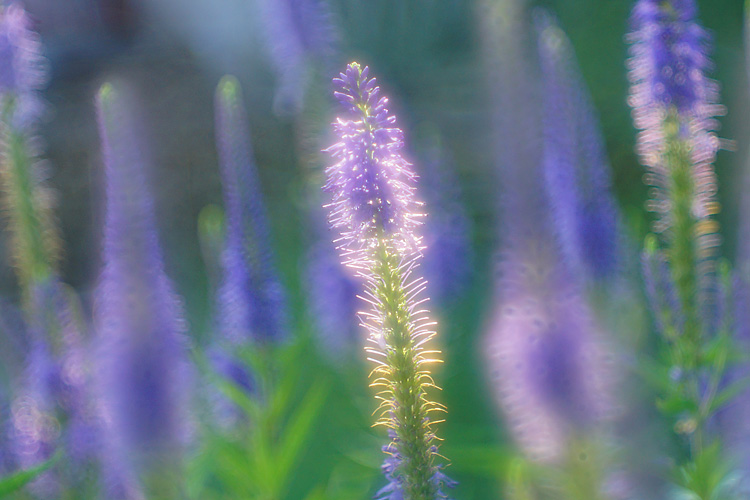
Now the Mamyia SF 4.5/145mm. It has a much longer focal length which causes a"compression" of the image. Looks more flat. Bokeh can be tricky (flower on the right side is quite "nervous", but background on the right side is extremely calm)

Finally the Minolta MD 2.8/85mm. Bokeh is very calm, but the softening effect is a bit "too well defined". Difficult to descibe what I mean, but there's a pretty obvious zone of "glow", and then quite suddenly "nothing" any more.
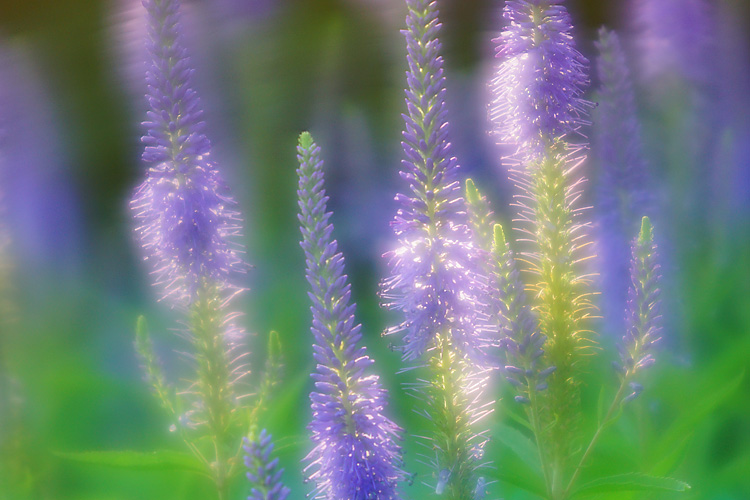
Here in this picture it's quite obvious (Minolta MD 2.8/85mm Soft Focus again):

Compare this to the Thambar:
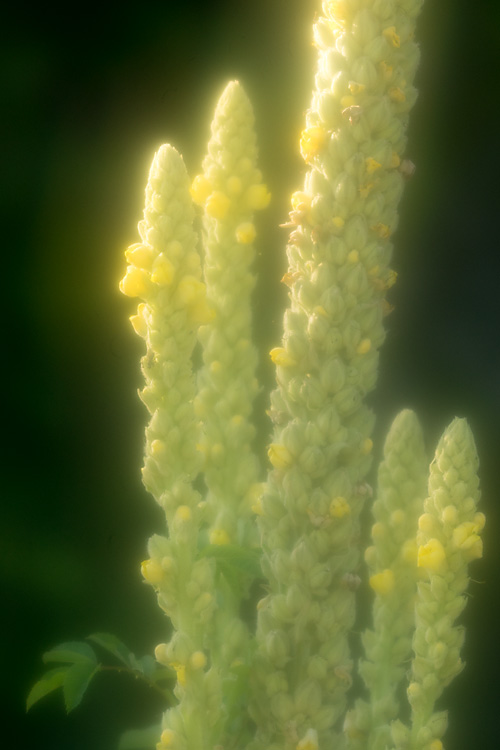
_________________
www.artaphot.ch |
|
| Back to top |
|
 |
55


Joined: 13 May 2013
Posts: 709
Location: U.S.
Expire: 2022-06-15
|
 Posted: Sat Dec 10, 2022 6:02 am Post subject: Posted: Sat Dec 10, 2022 6:02 am Post subject: |
 |
|
55 wrote:
| stevemark wrote: |
In my archives I just found a few images comparing some legendary soft focus lenses:
. . . |
A wonderful collection of fascinating lenses. Thank you for sharing with us, Stephan!
 |
|
| Back to top |
|
 |
Crazy Leica Fox

Joined: 29 Apr 2017
Posts: 59
|
 Posted: Sat Dec 10, 2022 11:48 am Post subject: Posted: Sat Dec 10, 2022 11:48 am Post subject: |
 |
|
Crazy Leica Fox wrote:
Your original comparison here led me to pick up a copy of the Mamiya, and this update only reinforces that decision. Thank you! It's a wonderful and versatile lens. I've demonstrated it to some photographers who expressed a dislike for its complex operation, with the effect adjustment ring and the focusing clutch, though I find its use very intuitive. My only complaint is that the focal length is a bit longer than I would prefer, but that's because I'm using it on full frame. |
|
| Back to top |
|
 |
Ultrapix

Joined: 06 Jan 2012
Posts: 551
Location: Italy
|
 Posted: Sat Dec 10, 2022 9:27 pm Post subject: Posted: Sat Dec 10, 2022 9:27 pm Post subject: |
 |
|
Ultrapix wrote:
Does anyone have an Imagon? It was legend at its time |
|
| Back to top |
|
 |
stevemark

Joined: 29 Apr 2011
Posts: 3754
Location: Switzerland
|
 Posted: Sat Dec 10, 2022 10:07 pm Post subject: Posted: Sat Dec 10, 2022 10:07 pm Post subject: |
 |
|
stevemark wrote:
| 55 wrote: |
| stevemark wrote: |
In my archives I just found a few images comparing some legendary soft focus lenses:
. . . |
A wonderful collection of fascinating lenses. Thank you for sharing with us, Stephan!
 |
I got these three lenses for <700 CHF. There's so much nice cheap stuff out there (much more than I can afford). VERY rarely I'm looking for a certain lens; I simply take the stuff that no one else wants  . .
| Crazy Leica Fox wrote: |
| Your original comparison here led me to pick up a copy of the Mamiya, and this update only reinforces that decision. Thank you! It's a wonderful and versatile lens. I've demonstrated it to some photographers who expressed a dislike for its complex operation, with the effect adjustment ring and the focusing clutch, though I find its use very intuitive. My only complaint is that the focal length is a bit longer than I would prefer, but that's because I'm using it on full frame. |
Spot on.
ALL these lenses are somehow difficult to master. Easiest is probably to have a well defined situation when starting to use such a lens (eg portraits in backlight with a black background).
1) The Thambar is easiest (well, sort of). There's only ONE way to change its softness: the aperture. Its bokeh is very donut-shaped (almost like the Trioplan 2.8/100). No swirley bokeh, though ... that would be show-stopper!
2) The Minolta is quite easy to use as well - however its softness is influenced by TWO factors: the position of the "softness" ring (0, 1, 2, or 3), and the aperture. Closing the aperture does NOT result in the same results as reducing the "softness" value! Thus lots of combinations are possible, all with different results ... must have been quite troublesome in analogue times! The lens, keeps its focus when varying the softness (unlike the Mamiya - see below). However the focal length is changing when going from "Soft 0" to "Soft 3" (nearly 10% as far as I remember)
3) Next comes the Mamiya. Basically it works like the Minolta ("Soft 0" to "Soft3" plus aperture to control the effects), BUT there's no compensating mechanism which keeps the subject in focus when changing the level of softening. It's basically like the difference between a zoom lens and a varifocal lens (Minolta would be zoom, Mamiya would be varifocal). In other words: You MUST focus AFTER setting the aperture / softness values. And the lens is huge ... but VERY well made. Nicer softening effects than the Minolta (let alone the Tamron). And pretty cheap (I got mine for about 80 CHF from a professional dealer)
4) Finally the Tamron. "Worst" softness, difficult bokeh (varies quite a lot depending on distance, focal length, aperture and degree of softening), and pretty expensive too. However it's a zoom! 85 mm often are too short. It certainly is convenient have access to longer focal lengths (especially since the aperture remains at f2.8 ...). And for many situations still very well suited (e. g. b/w portraits with a smooth background [studio photography!]). That one, however, must have been a nightmare when shooting film ...!
S
_________________
www.artaphot.ch |
|
| Back to top |
|
 |
RokkorDoctor


Joined: 27 Nov 2021
Posts: 1268
Location: Kent, UK
|
 Posted: Sun Dec 11, 2022 1:25 pm Post subject: Posted: Sun Dec 11, 2022 1:25 pm Post subject: |
 |
|
RokkorDoctor wrote:
| stevemark wrote: |
...
2) The Minolta is quite easy to use as well - however its softness is influenced by TWO factors: the position of the "softness" ring (0, 1, 2, or 3), and the aperture. Closing the aperture does NOT result in the same results as reducing the "softness" value! Thus lots of combinations are possible, all with different results ... must have been quite troublesome in analogue times! The lens, keeps its focus when varying the softness (unlike the Mamiya - see below). However the focal length is changing when going from "Soft 0" to "Soft 3" (nearly 10% as far as I remember)
S |
This lens intentionally introduces a controlled amount of spherical aberration. Minolta does advise that whilst the lens indeed keeps its focus when setting the softness, if (re-)focusing is done after setting the softness, the matte-screen should be used (SA impairs the effectiveness of the centre split wedge/microprism focusing aids). Based on my own experience with the 85/2.8 Varisoft I prefer to focus before setting the softness effect, which I find easier to do.
For those interested, back in January this year I posted the user manual in the library:
http://forum.mflenses.com/minolta-varisoft-rokkor-85mm-f-2-8-manual-t83339.html
_________________
Mark
SONY A7S, A7RII + dust-sealed modded Novoflex/Fotodiox/Rayqual MD-NEX adapters
Minolta SR-1, SRT-101/303, XD7/XD11, XGM, X700
Bronica SQAi
Ricoh GX100
Minolta majority of all Rokkor SR/AR/MC/MD models made
Sigma 14mm/3.5 for SR mount
Tamron SP 60B 300mm/2.8 (Adaptall)
Samyang T-S 24mm/3.5 (Nikon mount, DIY converted to SR mount)
Schneider-Kreuznach PC-Super-Angulon 28mm/2.8 (SR mount)
Bronica PS 35/40/50/65/80/110/135/150/180/200/250mm |
|
| Back to top |
|
 |
jamaeolus


Joined: 19 Mar 2014
Posts: 2929
Location: Eugene
Expire: 2015-08-20
|
 Posted: Sun Dec 11, 2022 6:49 pm Post subject: Posted: Sun Dec 11, 2022 6:49 pm Post subject: |
 |
|
jamaeolus wrote:
Thanks to all of you for explaining these things and especially to stevemark for the work involved in the display images.
_________________
photos are moments frozen in time |
|
| Back to top |
|
 |
stevemark

Joined: 29 Apr 2011
Posts: 3754
Location: Switzerland
|
 Posted: Mon Dec 12, 2022 2:22 am Post subject: Posted: Mon Dec 12, 2022 2:22 am Post subject: |
 |
|
stevemark wrote:
I have added some additional information on the various prototypes for the Minolta 2.8/85mm VariSoft:
http://forum.mflenses.com/viewtopic,p,1570187.html#1570187
http://www.artaphot.ch/minolta-sr/objektive/163-minolta-85mm-f28-varisoft
S
_________________
www.artaphot.ch |
|
| Back to top |
|
 |
RokkorDoctor


Joined: 27 Nov 2021
Posts: 1268
Location: Kent, UK
|
 Posted: Mon Dec 12, 2022 9:55 am Post subject: Posted: Mon Dec 12, 2022 9:55 am Post subject: |
 |
|
RokkorDoctor wrote:
Thanks Stephan! 
Very interesting info.
I should point out that unlike Minolta's other 85mm MF lenses which have 6 (straight~ish) aperture blades and obvious hexagonal bokeh-balls even at larger apertures, the Varisoft has 8 rounded aperture blades and provides much more pleasing bokeh-balls. Better not only for portraits, but also for 1980-s style dreamy Christmas photography 
_________________
Mark
SONY A7S, A7RII + dust-sealed modded Novoflex/Fotodiox/Rayqual MD-NEX adapters
Minolta SR-1, SRT-101/303, XD7/XD11, XGM, X700
Bronica SQAi
Ricoh GX100
Minolta majority of all Rokkor SR/AR/MC/MD models made
Sigma 14mm/3.5 for SR mount
Tamron SP 60B 300mm/2.8 (Adaptall)
Samyang T-S 24mm/3.5 (Nikon mount, DIY converted to SR mount)
Schneider-Kreuznach PC-Super-Angulon 28mm/2.8 (SR mount)
Bronica PS 35/40/50/65/80/110/135/150/180/200/250mm |
|
| Back to top |
|
 |
bp_reid

Joined: 06 Jan 2021
Posts: 57
Location: London, UK
|
 Posted: Mon Dec 12, 2022 10:34 am Post subject: Posted: Mon Dec 12, 2022 10:34 am Post subject: |
 |
|
bp_reid wrote:
I’d add one comment here. From my brief ownership of a slightly dodgy Tamron, it may not be the best SF lens but when SF is set to zero it is a pretty sharp short tele zoom with 2.8. Which is worth a bit too. |
|
| Back to top |
|
 |
calvin83


Joined: 12 Apr 2009
Posts: 7554
Location: Hong Kong
|
 Posted: Mon Dec 12, 2022 1:07 pm Post subject: Re: Soft Focus: Thambar, Mamiya, Minolta, and Tamron zoom Posted: Mon Dec 12, 2022 1:07 pm Post subject: Re: Soft Focus: Thambar, Mamiya, Minolta, and Tamron zoom |
 |
|
calvin83 wrote:
| stevemark wrote: |
Finally the Tamron SP 2.8/70-150mm at f2.8, 70mm focal length and max. soft level (level 3):

Soft effect: medium
Bokeh: slightly weird (circles with a central dot!!) |
I like the Bokeh of the photo above! 
_________________
https://lensfever.com/
https://www.instagram.com/_lens_fever/
The best lens is the one you have with you. |
|
| Back to top |
|
 |
stevemark

Joined: 29 Apr 2011
Posts: 3754
Location: Switzerland
|
 Posted: Mon Dec 12, 2022 8:40 pm Post subject: Re: Soft Focus: Thambar, Mamiya, Minolta, and Tamron zoom Posted: Mon Dec 12, 2022 8:40 pm Post subject: Re: Soft Focus: Thambar, Mamiya, Minolta, and Tamron zoom |
 |
|
stevemark wrote:
| bp_reid wrote: |
| I’d add one comment here. From my brief ownership of a slightly dodgy Tamron, it may not be the best SF lens but when SF is set to zero it is a pretty sharp short tele zoom with 2.8. Which is worth a bit too. |
Yes, that's true. The Tamron certainly isn't a bad lens - but it has a very complex character 
| calvin83 wrote: |
| stevemark wrote: |
Finally the Tamron SP 2.8/70-150mm at f2.8, 70mm focal length and max. soft level (level 3):
...
Soft effect: medium
Bokeh: slightly weird (circles with a central dot!!) |
I like the Bokeh of the photo above!  |
Fortunately the "donuts" remain donuts in the outer parts of the image. That keeps things simple. A swirley bokeh would ruin everything. In a studio setup with an uniform background and some back light on the model one wouldn't even notice the donuts. I "real world" images - think of Hamilton - such a bokeh might be too distracting. Of course it could be used in a creative way as well (look at kymartos images), but on the long run a calm bokeh is preferrable IMHO.
S
_________________
www.artaphot.ch |
|
| Back to top |
|
 |
kymarto


Joined: 30 Nov 2016
Posts: 406
Location: Portland, OR and Milan, Italy
|
 Posted: Tue Dec 27, 2022 10:40 pm Post subject: Posted: Tue Dec 27, 2022 10:40 pm Post subject: |
 |
|
kymarto wrote:
A couple of things regarding the Tamron 51a zoom. First, Tamron specifies two different ways to focus. First is to focus and then set the soft effect ring, and the second is to focus after setting the ring. Obviously with a lot of spherical aberration, maximum sharpness and maximum contrast happen at different focal points.
This is what Tamron had to say about the 51a:
“Tamron SP 70-150mm F/2.8 Model 51A: Tamron’s fast 70-150 F/2.8 constant aperture zoom lens was specifically designed for portrait photography, and was the first compact telephoto zoom lens ever produced by any manufacturer which featured a built-in softness control. This lens is extremely sharp at all focal lengths when not using the softness control since a total of six lens elements are used in the variator and compensator groups to reduce zoom dependent aberrations to their absolute minimum. Although the optical performance is somewhat optimized for 105mm (the ideal portrait focal length), this lens’s optical performance nevertheless is very good throughout the entire zoom range.
How does the softness control work? Simply press the SOFT ring button and then dial in any amount of softness adjustment from zero to three. The SOFT ring works by shifting the rear-most elements of the master lens group to introduce spherical aberration plus small amounts of off-axis coma and off-axis astigmatism.”
I use mine primarily for the wild bokeh, which I really like. Things look quite different depending on the focal length. I find having variable bokeh is quite cool. Four examples
#1
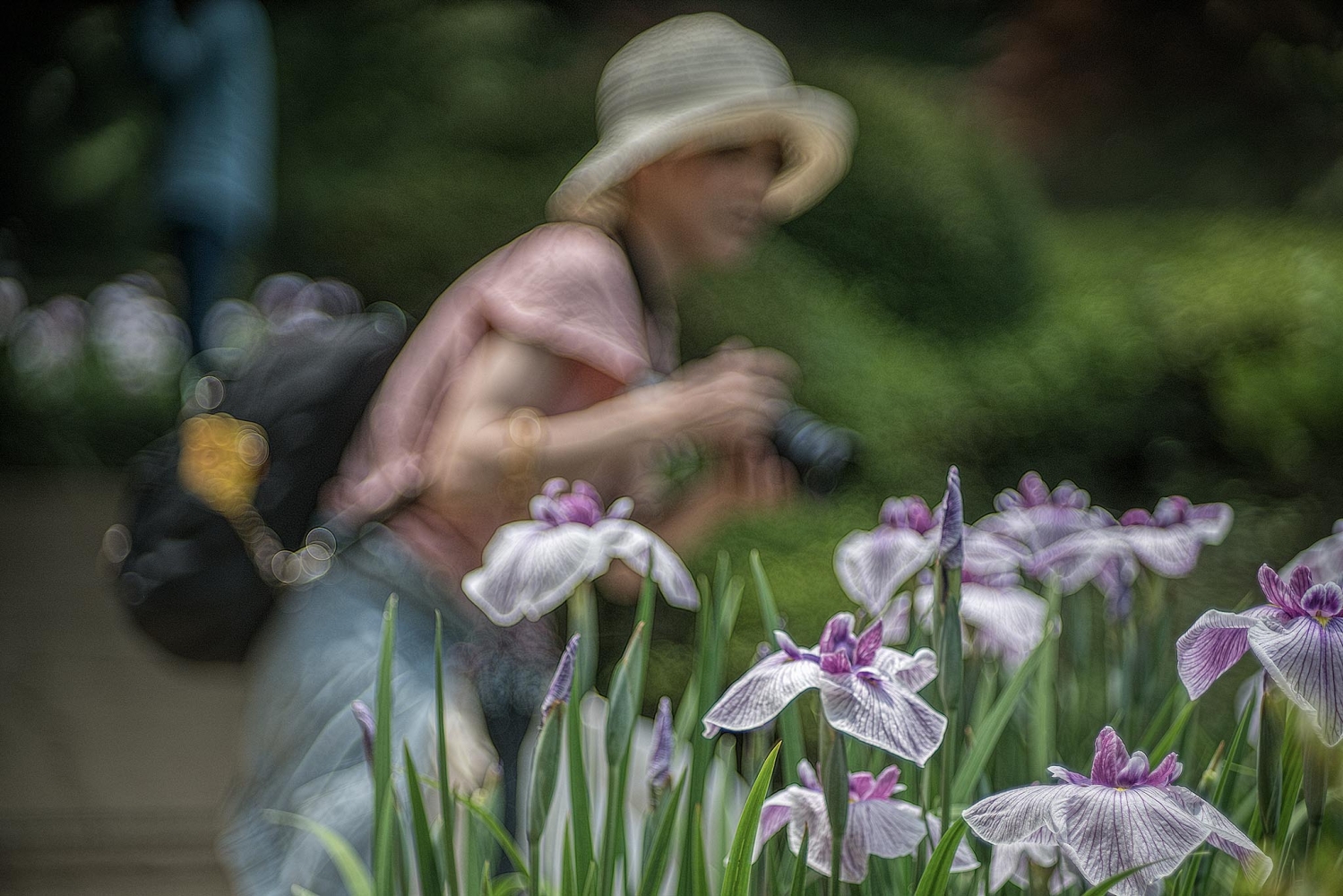
#1

#2
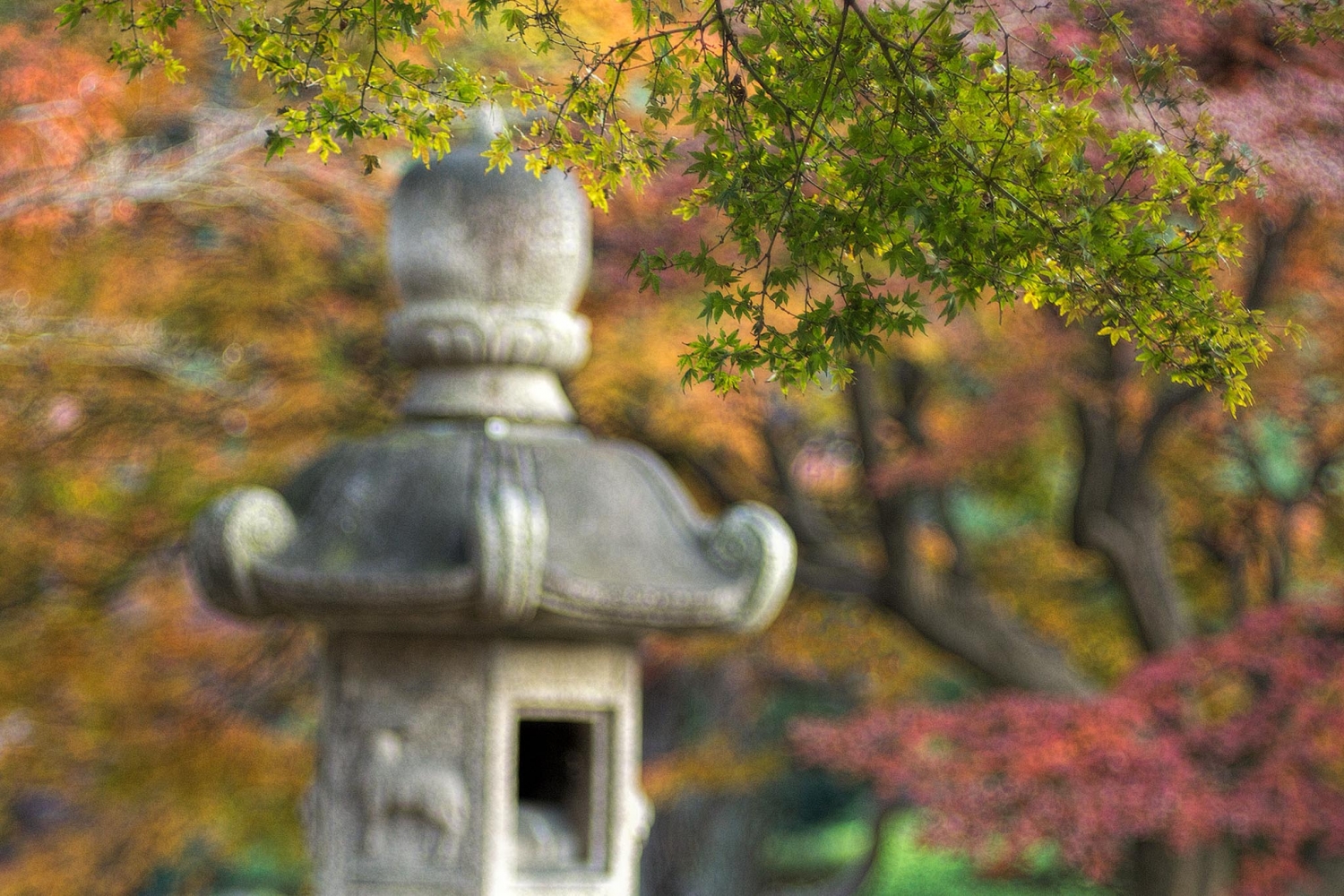
#3
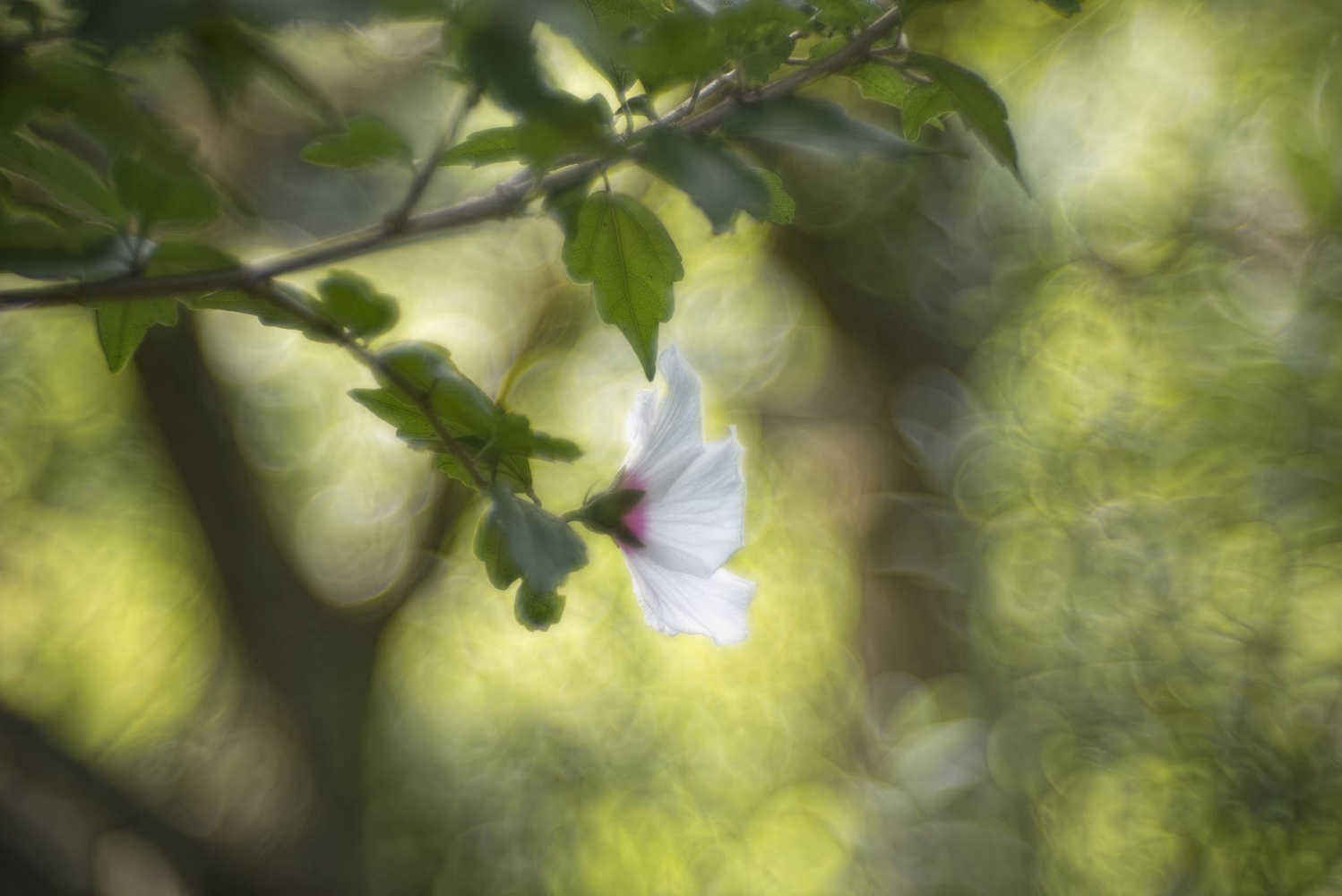
My favorite "soft focus" lens, is, however, a different animal. Actually it is a Cooke Triplet found on a couple of old folders, the Enna Werk Correlar 80mm f2.9. The craxy thing is that the lens goes from spherical overcorrection when focused at infinity to massive spherical undercorrection when focused at minimum focus distance. This has to do with increasing the distance from the front element to the other two, which is how it focuses. Mounted on a helicoid, it can be focused no matter how the lens focus is set. Strangely, I have tried other triplets in the same configuration, and while the bokeh changes slightly, it is nothing like the Correlar. Here are some examples, first three shots focused infinity, mid and close, and then some examples of how the look changes focused at infinity or at mfd
#4

#5
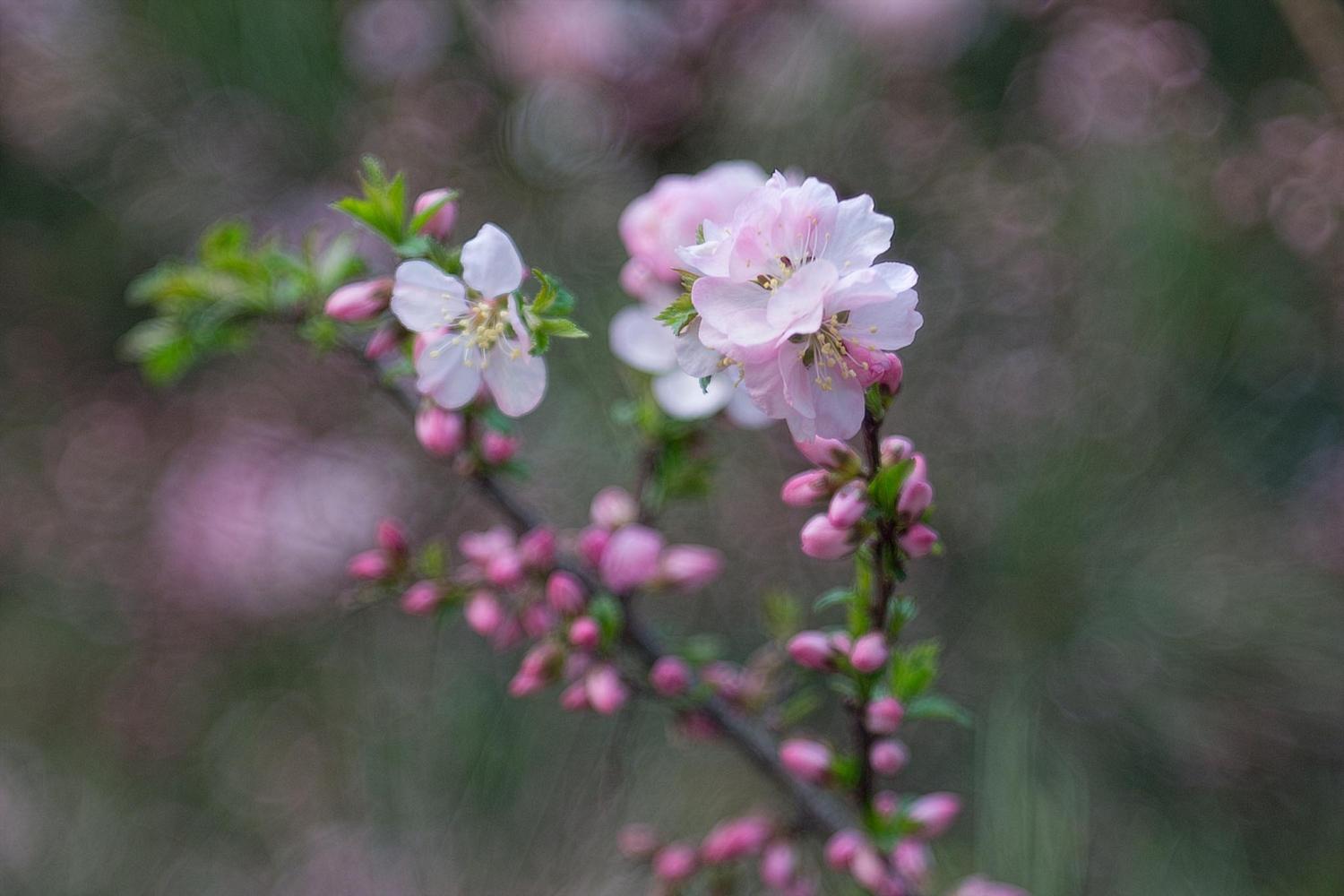
#6

#1

#2
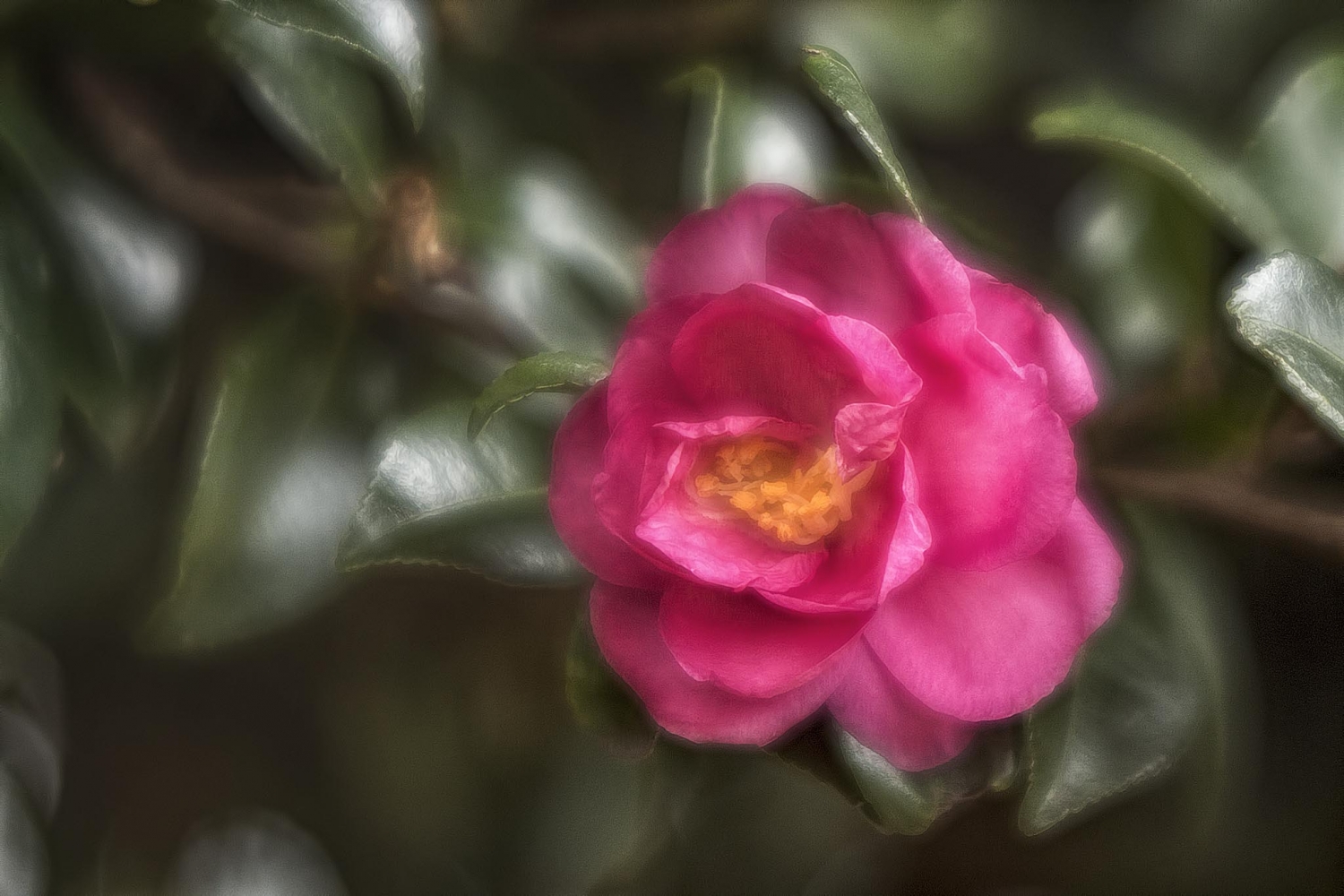
#3
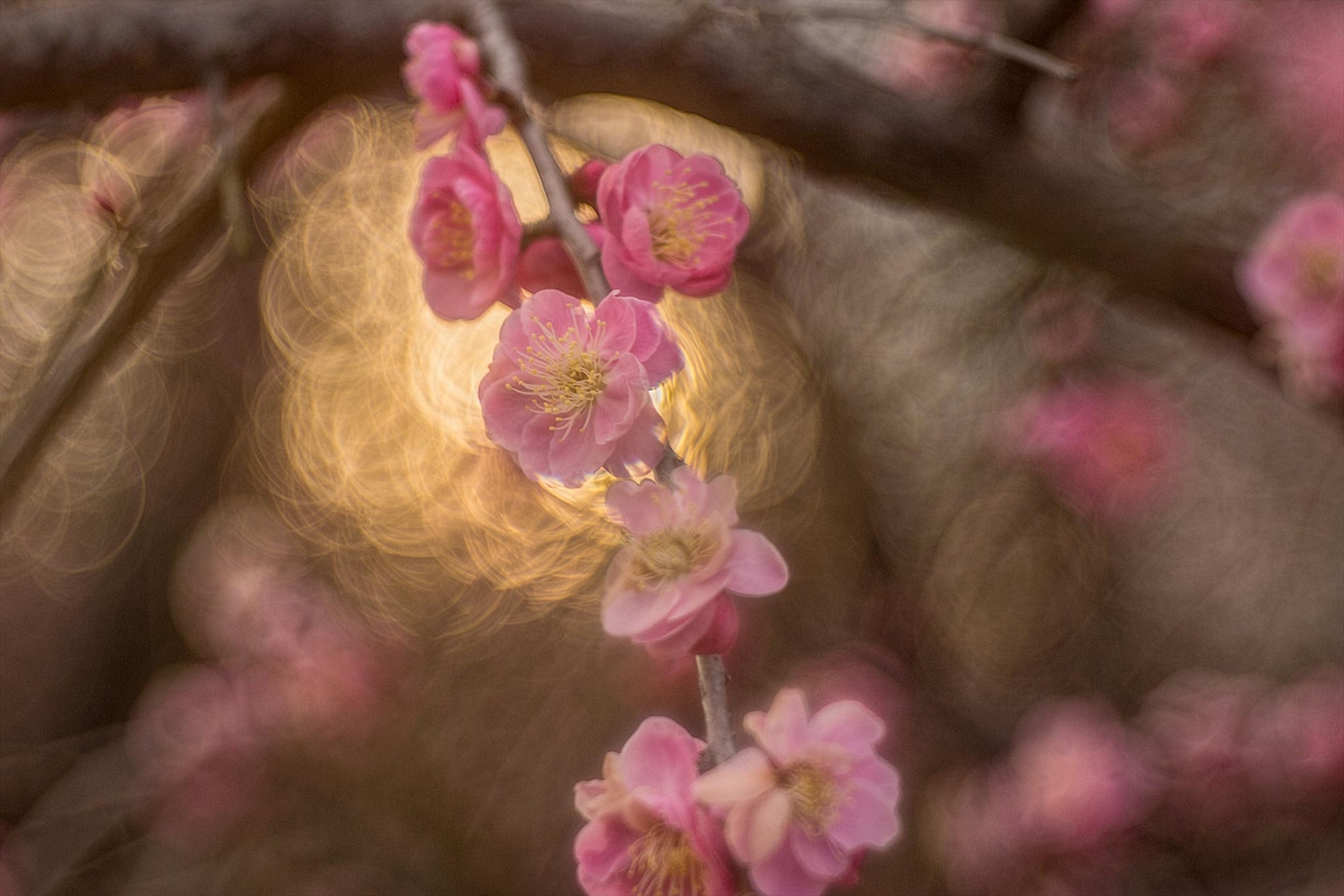
Two other lenses that make do for soft focus are the Angenieux TV-1 120mm f1.2 and an old Emil Busch projection lens. One example of each
#1

#1

_________________
Vintage lens aficionado |
|
| Back to top |
|
 |
RokkorDoctor


Joined: 27 Nov 2021
Posts: 1268
Location: Kent, UK
|
 Posted: Wed Dec 28, 2022 10:58 am Post subject: Posted: Wed Dec 28, 2022 10:58 am Post subject: |
 |
|
RokkorDoctor wrote:
| kymarto wrote: |
A couple of things regarding the Tamron 51a zoom ...
... I use mine primarily for the wild bokeh, which I really like. Things look quite different depending on the focal length. I find having variable bokeh is quite cool. Four examples ...
... My favorite "soft focus" lens, is, however, a different animal. Actually it is a Cooke Triplet found on a couple of old folders, the Enna Werk Correlar 80mm f2.9. The craxy thing is that the lens goes from spherical overcorrection when focused at infinity to massive spherical undercorrection when focused at minimum focus distance. This has to do with increasing the distance from the front element to the other two, which is how it focuses. Mounted on a helicoid, it can be focused no matter how the lens focus is set. Strangely, I have tried other triplets in the same configuration, and while the bokeh changes slightly, it is nothing like the Correlar. Here are some examples, first three shots focused infinity, mid and close, and then some examples of how the look changes focused at infinity or at mfd |
 Nice! Nice!
Kotokuin temple in Kamakura, by any chance?
Interesting. I have a Minolta Tessar that also uses just the front element for focusing, with a significant impact on the correction of spherical aberration. Never thought of mounting this on another helicoid to try and use it as an intentional soft focus lens. I will have to try that some day.
_________________
Mark
SONY A7S, A7RII + dust-sealed modded Novoflex/Fotodiox/Rayqual MD-NEX adapters
Minolta SR-1, SRT-101/303, XD7/XD11, XGM, X700
Bronica SQAi
Ricoh GX100
Minolta majority of all Rokkor SR/AR/MC/MD models made
Sigma 14mm/3.5 for SR mount
Tamron SP 60B 300mm/2.8 (Adaptall)
Samyang T-S 24mm/3.5 (Nikon mount, DIY converted to SR mount)
Schneider-Kreuznach PC-Super-Angulon 28mm/2.8 (SR mount)
Bronica PS 35/40/50/65/80/110/135/150/180/200/250mm |
|
| Back to top |
|
 |
|
|
